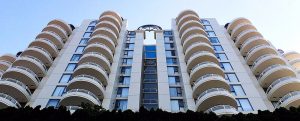October 2017
 All condo corporations are eventually confronted with an unexpected and major repair. When this time comes repairs will be necessary and a decision will have to be made on how to fund it.
All condo corporations are eventually confronted with an unexpected and major repair. When this time comes repairs will be necessary and a decision will have to be made on how to fund it.
One of the important considerations is to determine if the work is an “addition, alteration or improvement of common areas”. This will impact on who can approve the work and how it may be funded.
When a repair improves the useful life of a property or becomes a permanent enhancement it must be determined if the work is a common area alteration or improvement. Depending on the size and scope of work this may require some level of dialogue among board members, a vote of board members or possibly owners, or additional financial contributions by owners.
Condo boards have an obligation to maintain common areas. This includes repair after damage. The expectation is that such repairs will include materials reasonably similar in quality to original materials and in accordance with current construction standards. So long as this standard is met, any work is not considered to be an “addition, alteration or improvement of common areas”. The condo board has authority to approve such work without going to the owners for approval.
When there is an “addition, alteration or improvement of common areas”, the condo board has discretion to approve such work so long as the cost is no more than the greater of $1,000 or 1% of annual budgeted common expenses for the current fiscal year. Any “addition, alteration or improvement of common areas” costing more than this amount requires a vote of condo owners with 66 2/3% voting in favour. A vote is also required for any substantial change in common elements, with substantial change being defined as costing more than 10% of annual budgeted common expenses.
Routine maintenance necessary to maintain infrastructure or repair damage would not be considered an “addition, alteration or improvement of common areas” and not require a vote or discussion with owners. This work, to repair or replace something that is damaged or deteriorated, possibly due to wear and tear, is intended to keep property in ordinary operating condition.
Work that is an “addition, alteration or improvement of common areas” is typically something added to condo common elements that did not previously exist.
At times it can be difficult to determine when work is an “addition, alteration or improvement of common areas”. While there is no hard and fast rule to making this determination, a few examples are likely to be helpful.
- Installation of a swimming pool or tennis court, which does not currently exist, would be an “addition, alteration or improvement of common areas”.
- Repainting is typically not an “addition, alteration or improvement of common areas”.
- Restoration of areas after a fire or flood would not be an “addition, alteration or improvement of common areas”.
- Repair of water pipes or roof would not be an “addition, alteration or improvement of common areas”.
- Replacement of doors, carpeting, wall coverings or windows is unlikely to be an “addition, alteration or improvement of common areas”.
- Replacement of elevators would not be an “addition, alteration or improvement of common areas”. If display monitors did not exist in the older elevators and were added, that component would not be a restoration or repair. This portion of work would likely be an “addition, alteration or improvement of common areas”.
- Generally speaking, an addition or expansion of common areas could be an improvement requiring a vote of condo owners.
Any work deemed to be an “addition, alteration or improvement of common areas” is generally not funded through the reserve fund. Where operational funds are insufficient to pay for this work, it is incumbent on the board to determine how this work will be funded. This may involve setting funds aside to pay for this work, raising condo fees, implementing a special assessment or taking out a loan.



